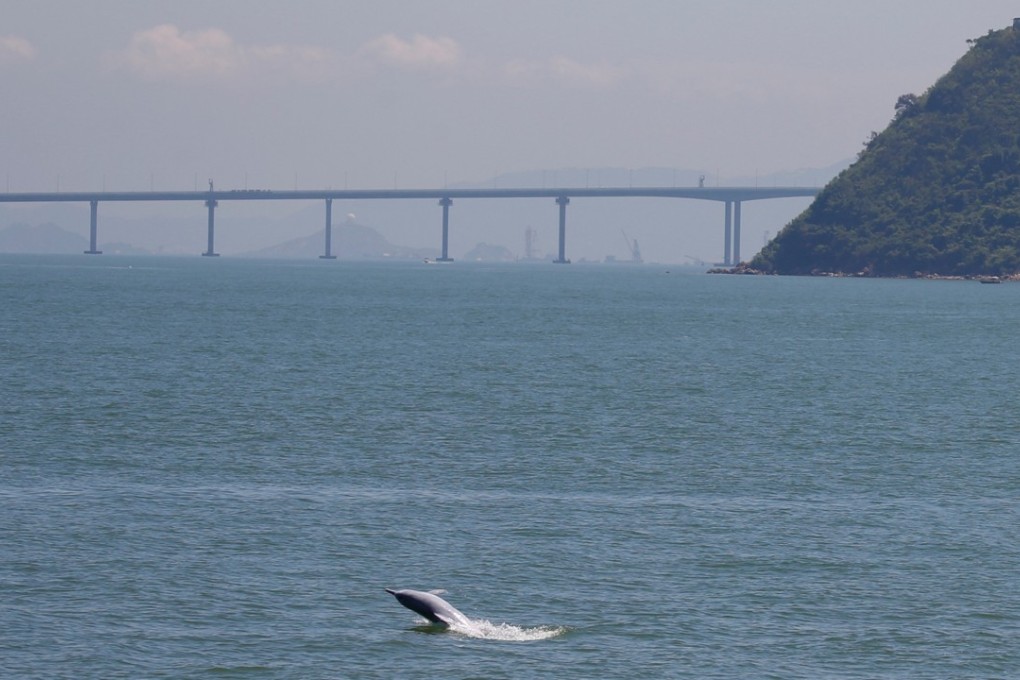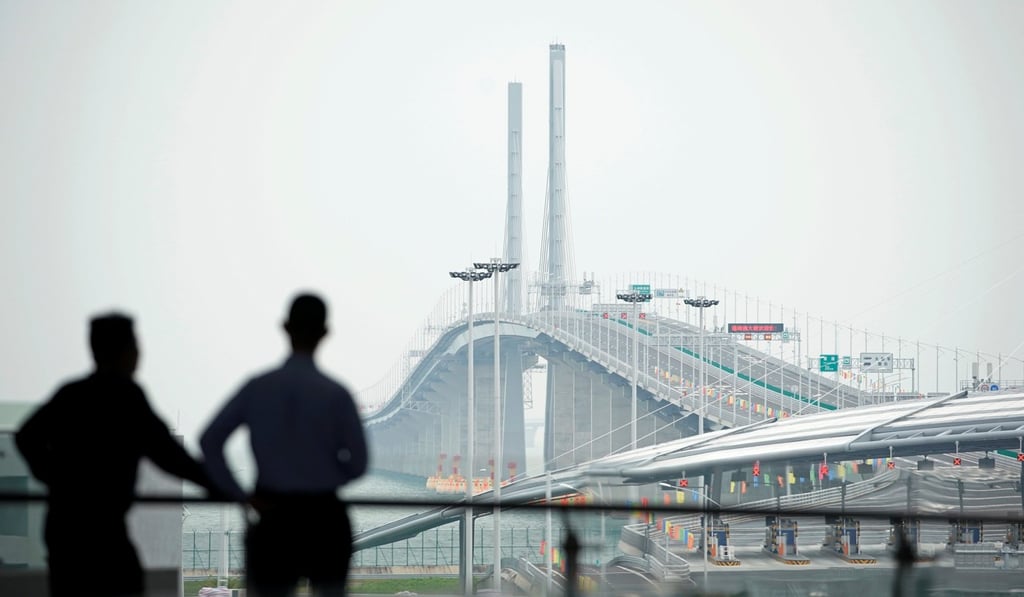Hong Kong activist groups decry worker deaths and drop in dolphin population caused by construction of mega bridge
- A total of 20 workers were killed and more than 500 injured during construction of the Hong Kong-Zhuhai-Macau Bridge
- Dolphin numbers around the structure fell by over 40 per cent despite measures to mitigate effects of construction

Conservationists also called for a review of Hong Kong’s environmental assessment system, saying loopholes meant mitigation measures had been ineffective in halting the drop in the number of Chinese white dolphins in the area.
Construction of the bridge, which cost Hong Kong about HK$120 billion (US$15.3 billion), began in 2009. Building on the Hong Kong end started in 2011.

Chan Kam-hong, chief executive of the Association for the Rights of Industrial Accident Victims, said on RTHK on Tuesday morning that the 55km bridge had cost 11 workers their lives on the Hong Kong section, and nine on the mainland part. But he said the Hong Kong government had told him two of those deaths on the local section were not considered industrial accidents related to construction of the bridge.
During construction, 20 workers were unfortunately sacrificed and more than 500 workers were injured